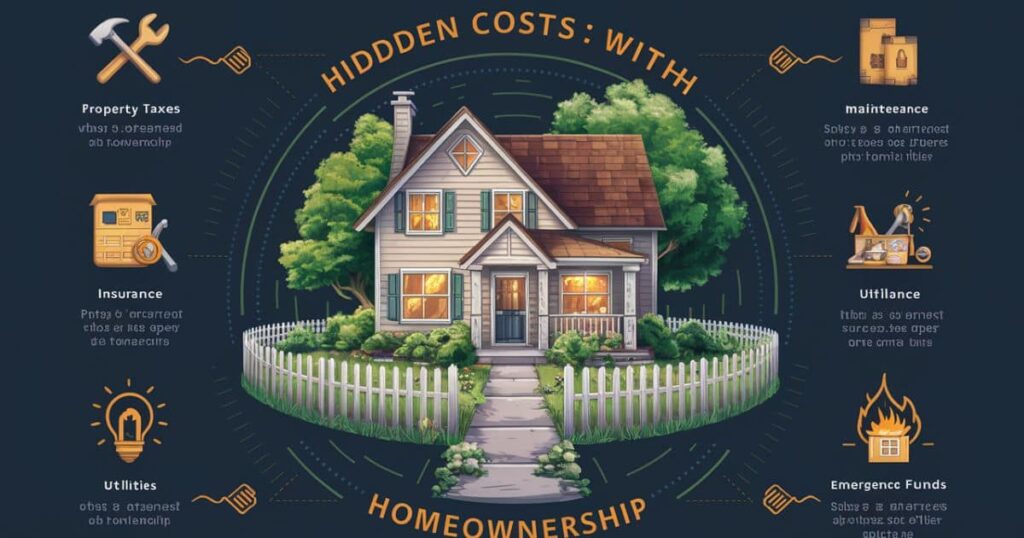Owning a home is a dream for many, but determining how much you need to make to afford a reasonably priced $300,000 house can be a daunting task.
While mortgage requirements vary based on several factors, in general, you need an annual household income between $56,000 and $110,000 to comfortably afford a $300,000 home.
Factors That Determine Your Affordability Range
Your ability to afford a $300,000 house depends on several key factors:
- Your Annual Household Income: This is the primary factor that lenders consider when determining your mortgage eligibility and the maximum home price you can afford.
- Your Current Debts and Debt-to-Income Ratio: Lenders will evaluate your existing debts, such as credit card balances, student loans, and car payments, to ensure that your total monthly debt payments, including the new mortgage, do not exceed a certain percentage of your gross monthly income (usually around 43%).
- Your Credit Score and Down Payment Amount: A higher credit score and a larger down payment can help you qualify for lower interest rates and potentially allow you to afford a more expensive home.
- The Mortgage Interest Rate You Qualify For: Interest rates can fluctuate based on market conditions and your credit profile. A lower interest rate can significantly reduce your monthly mortgage payment.
- Insurance, Taxes, and Other Homeownership Costs: In addition to your mortgage payment, you’ll need to budget for property taxes, homeowner’s insurance, utilities, and ongoing maintenance and repair costs.
The 28% Rule for Housing Affordability
A general guideline in the lending industry is the “28% rule,” which suggests that your monthly housing costs (including principal, interest, property taxes, and insurance) should not exceed 28% of your gross monthly income. Here are some examples of how this rule applies to different income levels for a $300,000 home:
| Annual Income | Maximum Monthly Housing Payment (28%) | Estimated Monthly Mortgage Payment |
|---|---|---|
| $60,000 | $1,400 | $1,847 – $2,854 |
| $80,000 | $1,867 | $1,847 – $2,854 |
| $100,000 | $2,333 | $1,847 – $2,854 |
Estimated monthly mortgage payment range based on a $300,000 home price, 7.31% interest rate, and various down payment amounts.
It’s important to note that the 28% rule is just a guideline, and many lenders allow for higher debt-to-income ratios, sometimes up to 35% or even 50% of your gross monthly income, depending on your overall financial situation.
Recommended Blog: The Ultimate Guide to Kitchen Remodeling: Transform Your Space with Expert Tips
How Much Home Can I Afford On My Current Income?

To give you a better idea of how your income translates to home affordability, here are some examples:
- $100,000 Annual Income: With a $100,000 annual income, you could comfortably afford a $300,000 home, even with a minimal down payment. Your monthly mortgage payment would be around $2,584, which is approximately 31% of your gross monthly income.
- $70,000 Annual Income: At this income level, affording a $300,000 home may be possible, but you would likely need some down payment assistance or use up to 40% of your monthly income for your mortgage payment.
- $60,000 Annual Income: While it’s possible to afford a $300,000 home on a $60,000 salary, you would need minimal or no other debt obligations, and your mortgage payment could consume up to 50% of your monthly income.
- $40,000 Annual Income: With an annual income of $40,000, it may be challenging to afford a $300,000 home without significant down payment assistance or using an alternative mortgage program.
Remember, these are general examples, and your specific situation may vary based on factors like your credit score, debt-to-income ratio, and the interest rate you qualify for.
The Benefits of a Larger Down Payment
While it’s possible to purchase a home with a minimal down payment, a larger down payment can significantly reduce your monthly mortgage payment and overall borrowing costs. Here’s how different down payment amounts can impact your monthly payment for a $300,000 home with a 7.31% interest rate:
| Down Payment | Monthly Mortgage Payment* |
|---|---|
| $5,000 (1.7%) | $2,544 |
| $15,000 (5%) | $2,318 |
| $25,000 (8.3%) | $2,243 |
| $60,000 (20%) | $1,949 |
Estimated monthly payment includes principal, interest, property taxes, and insurance.
As you can see, increasing your down payment from $5,000 to $60,000 (20% of the home’s value) can reduce your monthly payment by nearly $600. This not only makes the home more affordable but also helps you build equity faster and potentially avoid the need for private mortgage insurance (PMI).
Using Down Payment Assistance to Increase Your Buying Power
If you’re struggling to save for a larger down payment, consider exploring down payment assistance programs. These programs, offered by state and local governments, banks, and other organizations, provide grants, forgivable loans, or other forms of financial assistance to help homebuyers cover their down payment and closing costs.
For example, let’s say you qualify for a $20,000 down payment assistance grant. Instead of putting down $5,000 (1.7%) on a $300,000 home, you could put down $25,000 (8.3%), resulting in a monthly payment of $2,243 instead of $2,544. This could make the difference in affording the home comfortably.
“Down payment assistance programs can be a game-changer for first-time homebuyers or those with limited savings,” says Jane Smith, a real estate agent with XYZ Realty. “It’s worth exploring these options to see if you qualify and how they could impact your buying power.”
However, it’s important to understand the responsibilities and potential drawbacks of using down payment assistance, such as repayment requirements or resale restrictions. Be sure to carefully review the terms of any program you’re considering.
Other Homeownership Costs To Budget For

While your monthly mortgage payment is likely your most significant housing expense, it’s crucial to budget for additional costs associated with homeownership:
- Property Taxes: Depending on your location, property taxes can add hundreds of dollars to your monthly housing costs.
- Homeowner’s Insurance: Most lenders require you to carry homeowner’s insurance, which can cost anywhere from $600 to $1,200 or more per year.
- Utilities: Don’t forget to factor in the costs of utilities like electricity, gas, water, and cable/internet.
- Closing Costs: When you purchase a home, you’ll typically need to pay closing costs, which can range from 2% to 5% of the home’s purchase price.
- Maintenance and Repairs: Owning a home also means being responsible for ongoing maintenance and repairs. It’s a good idea to set aside at least 1% of your home’s value each year for these expenses.
- HOA Fees (if applicable): If you purchase a home in a community with a homeowner’s association (HOA), you’ll need to budget for monthly or annual fees.
By budgeting for these additional expenses, you can avoid being caught off guard by unexpected costs and ensure that you can truly afford the home you’re considering.
Conclusion
Determining how much income you need to afford a $300,000 house involves considering various factors, including your annual household income, existing debts, credit score, down payment amount, and the mortgage interest rate you qualify for.
While general guidelines suggest needing an annual income between $56,000 and $110,000 to comfortably afford a $300,000 home, your specific situation may vary. It’s essential to work with a lender and use mortgage calculators to assess your affordability based on your unique financial circumstances.
Remember, a larger down payment can significantly reduce your monthly mortgage payments and overall borrowing costs. If you’re struggling to save for a down payment, explore down payment assistance programs offered by state and local governments, banks, and other organizations.
Additionally, don’t forget to budget for other homeownership costs, such as property taxes, insurance, utilities, closing costs, and ongoing maintenance and repairs. By factoring in these expenses, you can make a more informed decision about your ability to afford a $300,000 home and avoid potential financial strain.
Ultimately, purchasing a home is a significant investment, and it’s crucial to approach it with a thorough understanding of your finances and a realistic assessment of what you can

Warner Clips is an expert writer with 4 years of experience crafting engaging content on Home topics. My expertise ranges from creating cozy environments to tackling Home Improvement projects. Find my work in publications like Huffington Post and Reader’s Digest.







